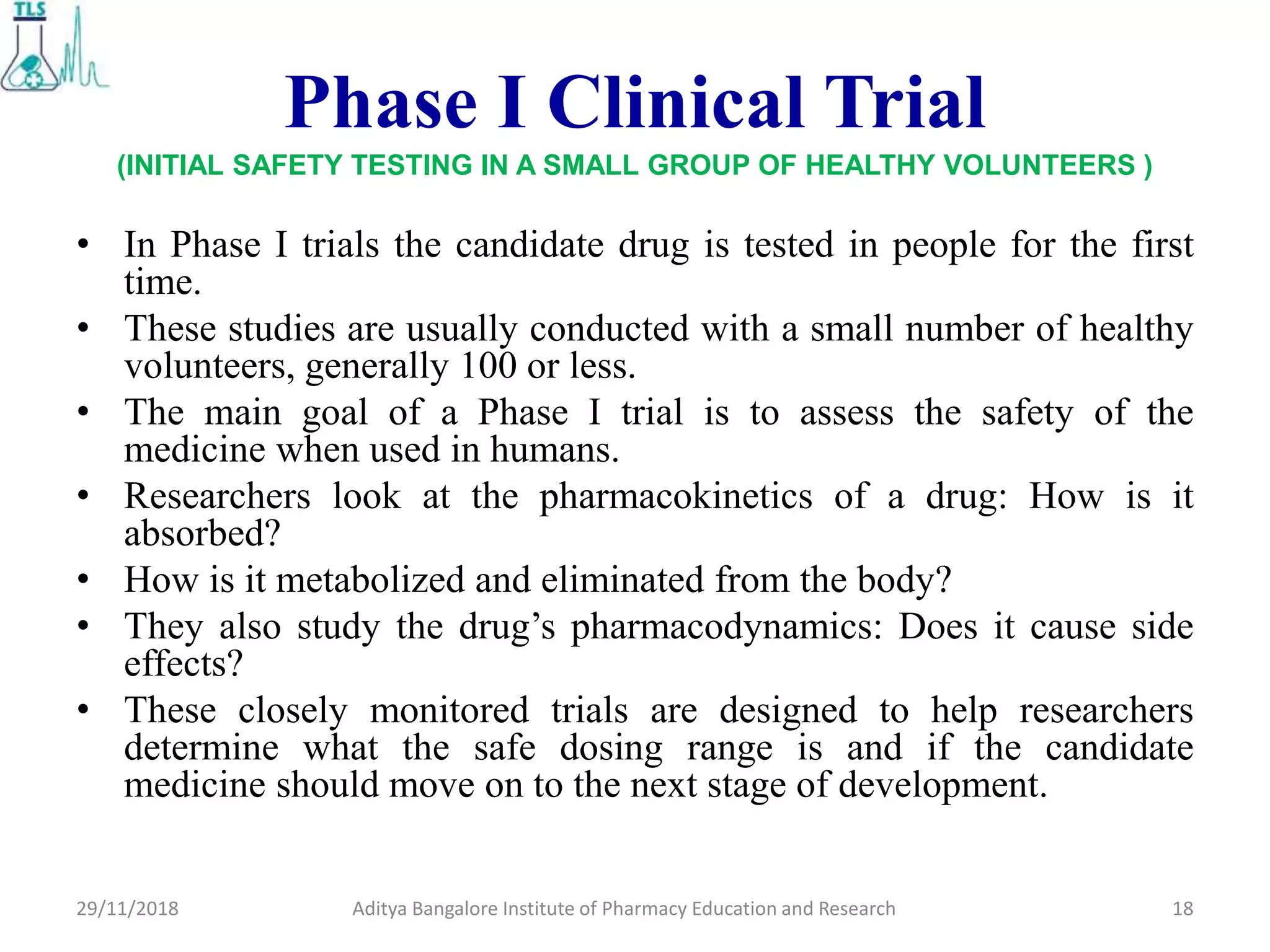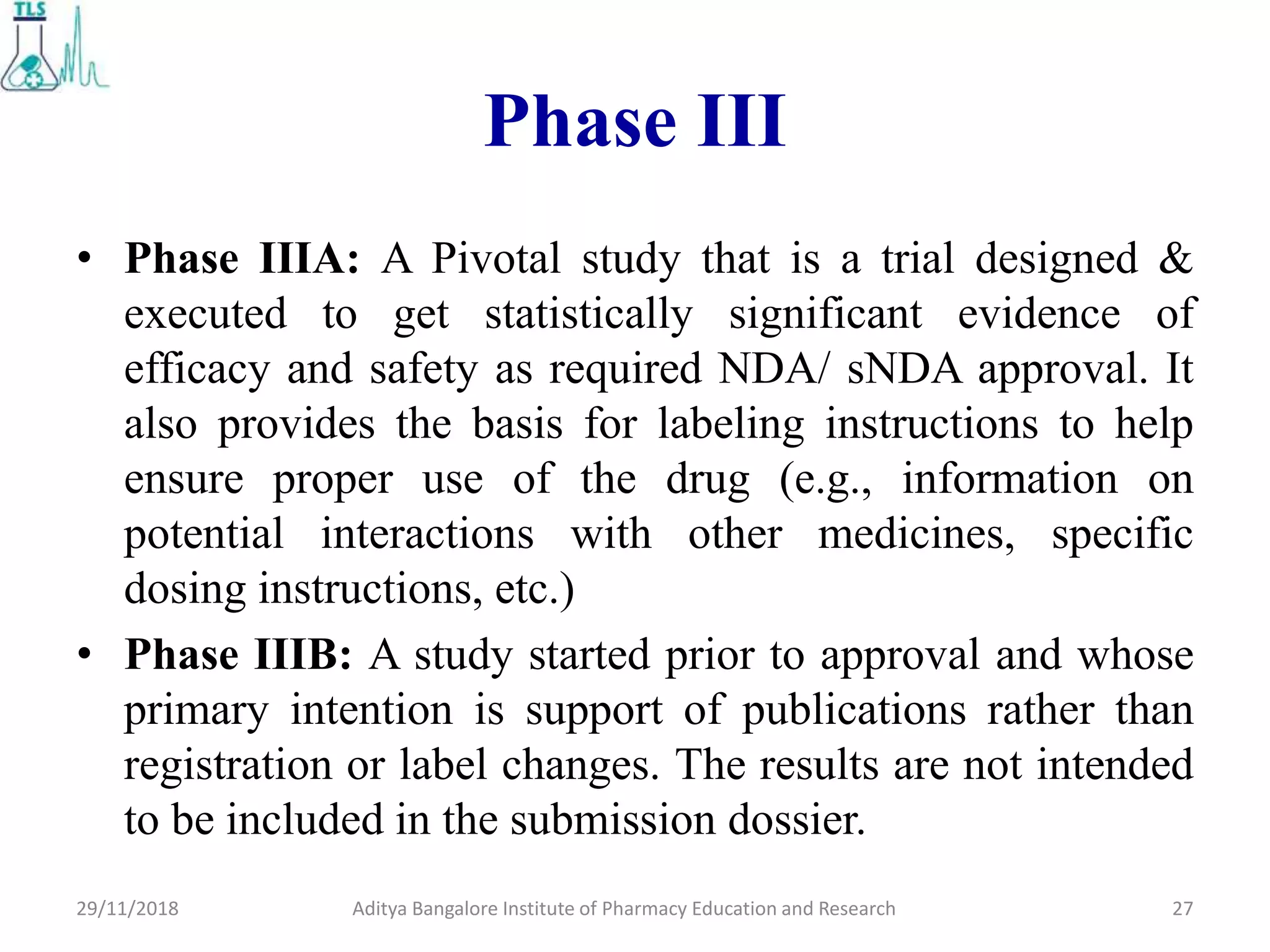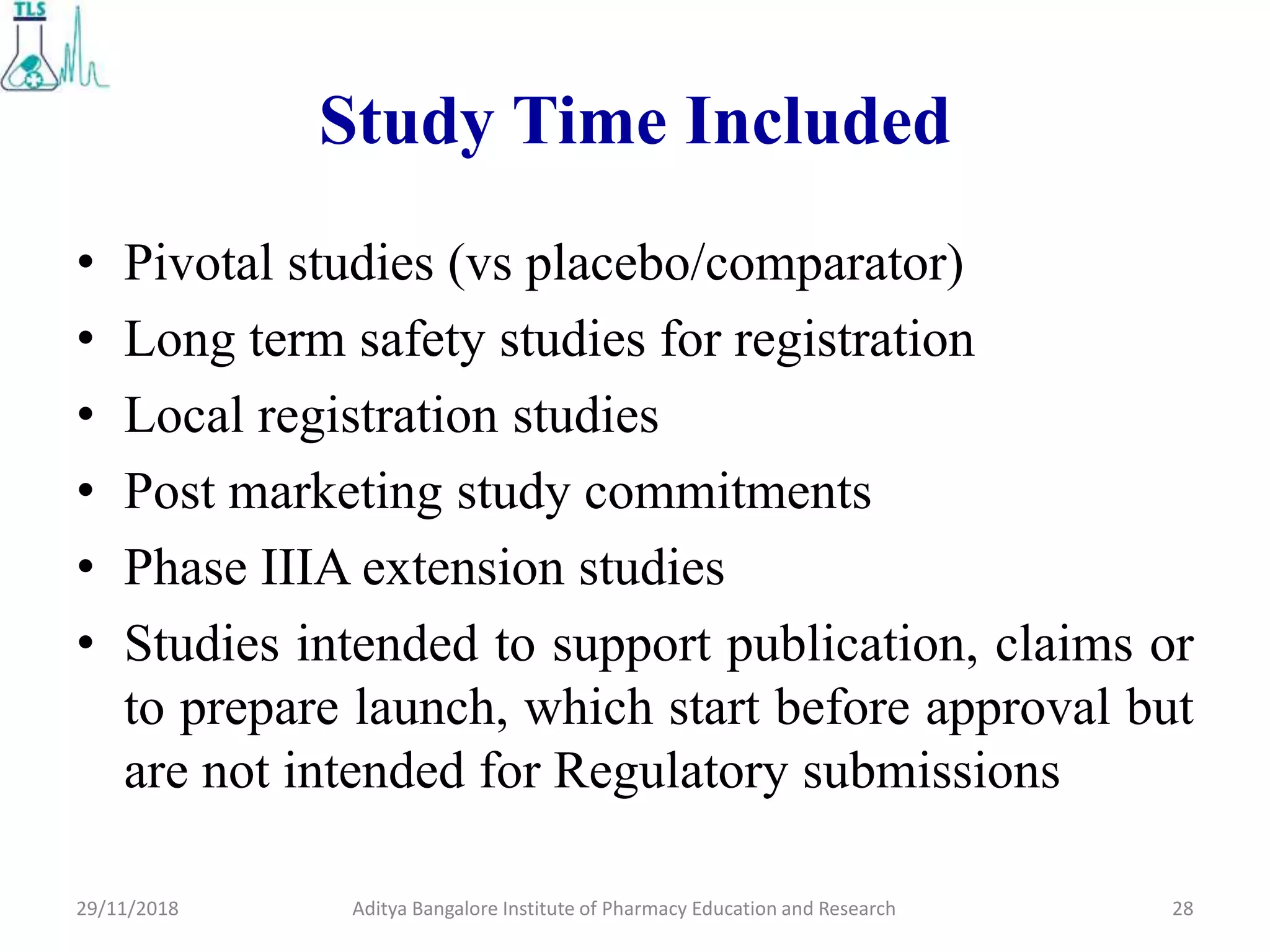This document discusses the development of clinical drug products from early stages of formulation through clinical trials. It covers topics such as dosage forms, clinical pharmacology, pharmacokinetics, pharmacodynamics, clinical dose ranges, clinical trials through various phases, and clinical packaging and storage. The phases of clinical trials are described in detail, including typical patient numbers, study lengths and purposes for phases I through III.










































